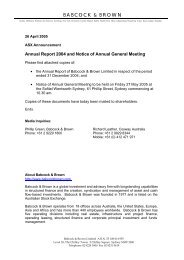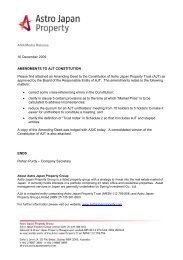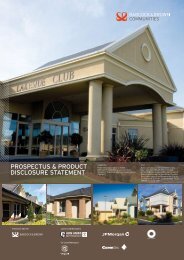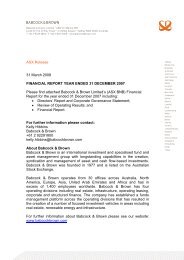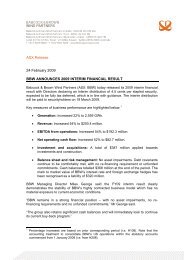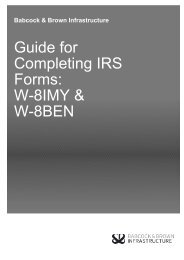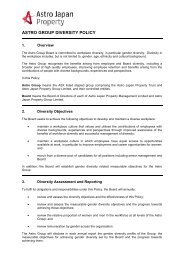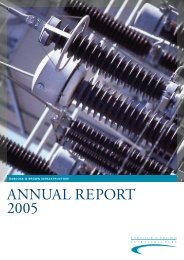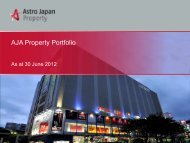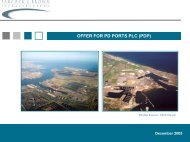Lead Manager
babcock & brown limited prospectus.pdf - Astrojapanproperty.com
babcock & brown limited prospectus.pdf - Astrojapanproperty.com
- No tags were found...
You also want an ePaper? Increase the reach of your titles
YUMPU automatically turns print PDFs into web optimized ePapers that Google loves.
BABCOCK & BROWN PROSPECTUS<br />
OPERATING LEASING<br />
Overview<br />
Babcock & Brown’s operating leasing business manages a portfolio of over US$4.4 billion in assets within three<br />
Business Units:<br />
Babcock & Brown Aircraft Babcock & Brown Rail Babcock & Brown Electronics<br />
Management (BBAM) Management (BBRM) Management (BBEM)<br />
• Manages approximately 144<br />
leased commercial jets<br />
• Portfolio valued in excess of<br />
US$3.8 billion<br />
• Estimated to be sixth largest<br />
portfolio of leased commercial<br />
jets worldwide by value<br />
• Manages over 10,000 freight<br />
railcars in North America<br />
• Portfolio value in excess of<br />
US$600 million<br />
• Relatively new business built<br />
around a management team with<br />
over 20 years’ combined average<br />
experience<br />
• Focused on trading, lease-portfolio<br />
management and the creation of<br />
financing products for<br />
semiconductor manufacturing<br />
equipment<br />
Locations<br />
Contribution to Net Revenue<br />
USA, Europe, Japan<br />
20%<br />
24%<br />
2003A<br />
2004F<br />
Babcock & Brown’s principal strategy in its operating leasing businesses is to acquire assets that can be placed<br />
with appropriate long-term investors, while maintaining an ongoing management role.The assets are typically<br />
held under investment structures designed by Babcock & Brown to optimise financial returns which are shared<br />
between itself and investors.This model allows Babcock & Brown to rely on its investment selection and<br />
structuring expertise, rather than its financial resources, to build its operating lease portfolios, allowing it to<br />
compete effectively with better-capitalised competitors.<br />
Babcock & Brown has minimal exposure to the residual risk on the leased assets it manages, with that exposure<br />
typically limited to its ultimate income from remarketing or exit fees at the end of the lease term.This business<br />
model has proven highly scalable and has allowed Babcock & Brown to grow its operating lease portfolios with a<br />
relatively modest deployment of capital. Strong long-term relationships with debt and equity providers give<br />
Babcock & Brown a significant competitive advantage.<br />
Babcock & Brown earns revenue from asset-acquisition and syndication fees, ongoing management fees,<br />
equipment trading and performance-based remarketing and exit fees. Management, remarketing and exit fees<br />
have grown together with the size of the leased asset portfolios and, due to the long-term nature of most<br />
management contracts, provide an element of highly reliable ongoing revenue.<br />
Leveraging its in-depth knowledge of these asset classes and its investment selection skills, Babcock & Brown is<br />
also active in acquiring assets for short-term resale, typically after it has added value by restructuring the lease<br />
or completing a refurbishment or reconfiguration of the asset.These assets may be sold into a Babcock &<br />
Brown-managed leased portfolio or to a trade buyer as dictated by market conditions.These asset trading<br />
activities provide a useful hedge against downturns in the cyclical aircraft, railcar and semiconductor<br />
manufacturing equipment markets as assets can be acquired at attractive valuations to then be sold at a profit<br />
when market conditions improve.<br />
65



